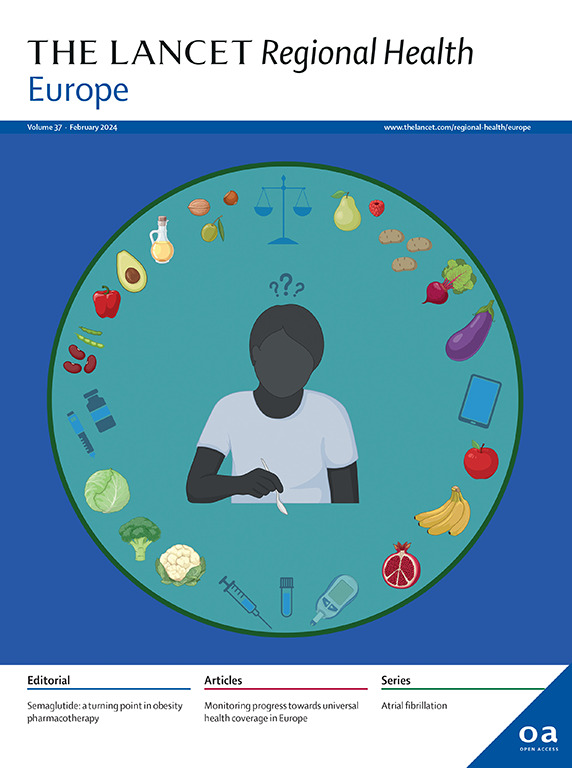家庭外护理安置、精神疾病和无家可归风险:一项基于人群的队列研究
IF 13
Q1 HEALTH CARE SCIENCES & SERVICES
引用次数: 0
摘要
家庭逆境和童年虐待与成年后无家可归的风险增加有关。然而,据我们所知,没有以人口为基础的纵向研究在考虑精神疾病和父母背景的情况下,调查了户外安置与随后的无家可归之间的关系。因此,我们的目的是调查家庭外安置与儿童或青少年时期精神疾病和以后生活中无家可归之间的关系。方法:我们使用了1983年1月1日至2003年12月31日在丹麦全国范围内以登记为基础的出生队列的数据,这些数据来自2001年1月1日至2021年12月31日的任何时间点。儿童和青少年(0-17岁)从18岁生日开始就被跟踪调查无家可归的风险。我们利用国家登记的无家可归者和精神疾病信息调查了两者之间的联系。我们根据18岁之后的首次无家可归(定义为第一次与收容所接触),检查了18岁之前有任何家庭外安置史的个体,有或没有精神疾病。我们使用aallen - johansen估计器估计累积关联函数。利用Cox比例风险回归分析,根据出生年份、父母社会人口学因素和精神疾病进行调整,按性别估计了家庭外安置、精神疾病和无家可归之间关联的风险比。此外,我们采用分层Cox模型(由母亲分层)来检验家庭内协变量的贡献。研究对象包括1226130名年龄在18-39岁之间的丹麦居民。其中,53,281人(4.3%)在童年或青春期经历过家庭外安置。到39岁时,12.2% (95% CI 11.6 - 12.7)的男性和6.3% (95% CI 5.9 - 6.7)的女性有过离家安置史,经历过无家可归。与没有此类病史的人相比,这对应于显著增加的风险,男性的调整hr为7.1 (95% CI为6.7 - 7.5),女性为9.0 (95% CI为8.2 - 9.8)。在限于955,287个人的兄弟姐妹分析中,并根据出生年份进行调整,与没有此类历史的兄弟姐妹相比,离家安置与无家可归风险增加3倍相关(男性aHR为2.8 (95% CI为2.4 - 3),女性aHR为3.2(2.4 - 4.1))。有过户外安置史和精神障碍史的人无家可归的风险甚至更高,特别是在第一次安置后发生精神诊断时。在整个队列中,与既没有家庭外安置也没有精神障碍的个体相比,男性调整hr为11.8 (95% CI 10.8 - 13.0),女性调整hr为19.3(16.9 - 21.9)。有过家庭外安置史的人经历无家可归的风险更高,特别是那些同时患有精神疾病的人。这些调查结果突出表明,需要采取有针对性的干预措施,并在医疗和社会服务部门之间协调努力,以防止无家可归。由伦德贝克基金会资助SFN, F-61171-23-50和独立研究基金资助SFN 10.46540/3162-00051B。本文章由计算机程序翻译,如有差异,请以英文原文为准。
Out-of-home care placement, psychiatric disorders, and risk of homelessness: a population-based cohort study
Background
Family adversity and childhood abuse have been associated with an increased risk of homelessness in adulthood. However, to our knowledge, no population-based longitudinal studies have examined the association between out-of-home placement and subsequent homelessness, while accounting for psychiatric disorders and parental background. Thus, we aimed to investigate the association between out-of-home placement and psychiatric disorders during childhood or adolescence and homelessness later in life.
Methods
We used data from a nationwide, register-based birth cohort in Denmark from 1 January 1983 to 31 December 2003, who were alive at any point from 1 January 2001 to 31 December 2021. Children and adolescents (aged 0–17) were followed up from their 18th birthday for risk of homelessness. We investigated associations using national registers with information on homelessness and psychiatric disorders. We examined individuals with any out-of-home placement history with and without psychiatric disorders diagnosed up to age 18 according to the first episode of homelessness after age 18, defined as first contact with a shelter. We estimated the cumulative incidence function using an Aalen-Johansen estimator. Hazard ratios (HRs) for the association between out-of-home placement, psychiatric disorder, and homelessness were estimated by sex using Cox proportional-hazard regression analyses, adjusted for birth year, parental sociodemographic factors and psychiatric disorders. Additionally, we employed a stratified Cox model (stratified by mother) to examine the contribution of within-family covariates.
Findings
The study cohort included 1,226,130 Danish residents aged 18–39 years. Of these, 53,281 individuals (4·3%) had experienced out-of-home placement during childhood or adolescence. By age 39, 12·2% (95% CI 11·6–12·7) of males and 6·3% (95% CI 5·9–6·7) of females with a history of out-of-home placement experienced homelessness. This corresponds to a substantially increased risk compared to people without such a history, with adjusted HRs of 7·1 (95% CI 6·7–7·5) for males and 9·0 (8·2–9·8) for females. In sibling analyses restricted to 955,287 individuals and adjusted for birth year, out-of-home placement was associated with a 3-fold increased risk of homelessness compared to siblings without such a history (aHR 2·8 (95% CI 2·4–3·3) for males and aHR 3·2 (2·4–4·1) for females). Homelessness risk was even higher for individuals with a history of both out-of-home placement and psychiatric disorder, particularly when psychiatric diagnosis occurred after the first placement. In the full cohort, adjusted HRs were 11·8 (95% CI 10·8–13·0) for males and 19·3 (16·9–21·9) for females, compared to individuals with neither out-of-home placement nor psychiatric disorder.
Interpretation
Individuals with a history of out-of-home placement are at higher risk of experiencing homelessness, particularly those with co-occurring psychiatric disorders. These findings highlight the need for targeted interventions and coordinated efforts across medical and social services to prevent homelessness.
Funding
Funded by a grant from the Lundbeck Foundation to SFN, F-61171-23-50 and the Independent Research Fund to SFN 10.46540/3162-00051B.
求助全文
通过发布文献求助,成功后即可免费获取论文全文。
去求助
来源期刊

Lancet Regional Health-Europe
Multiple-
CiteScore
19.90
自引率
1.40%
发文量
260
审稿时长
9 weeks
期刊介绍:
The Lancet Regional Health – Europe, a gold open access journal, is part of The Lancet's global effort to promote healthcare quality and accessibility worldwide. It focuses on advancing clinical practice and health policy in the European region to enhance health outcomes. The journal publishes high-quality original research advocating changes in clinical practice and health policy. It also includes reviews, commentaries, and opinion pieces on regional health topics, such as infection and disease prevention, healthy aging, and reducing health disparities.
 求助内容:
求助内容: 应助结果提醒方式:
应助结果提醒方式:


